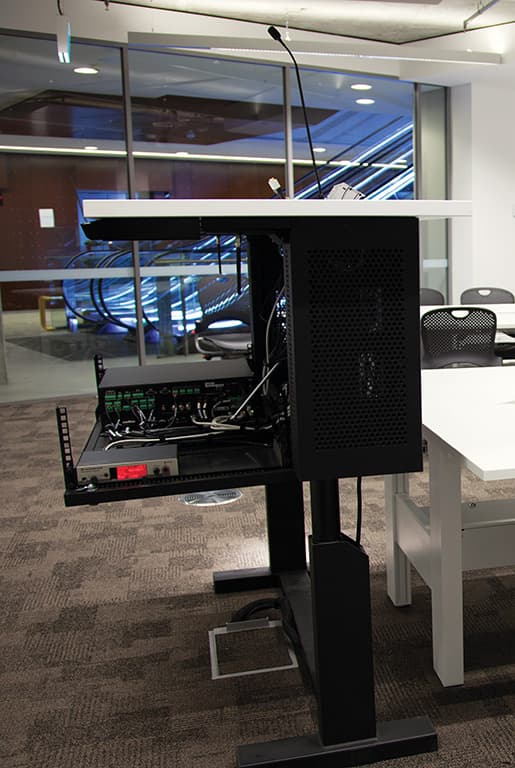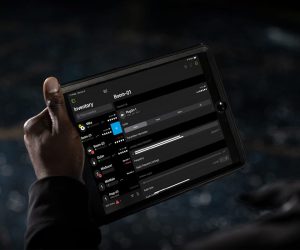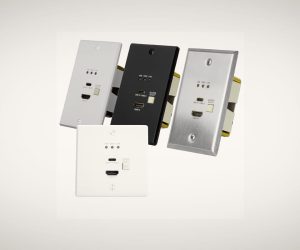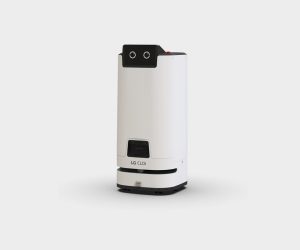
Facilitating Collaboration in Education
The University of Technology Sydney grows its own educational technology solutions.
Text:/ Andy Ciddor
Collaborative teaching and learning is an approach to the learning process that is simultaneously as ancient as humanity’s original clan groups and as new as our ability to establish ad hoc networks of portable computing and communication devices. Although the idea of a group of people working together to tackle a problem or undertake a complex task is so blindingly obvious and ingrained in us that we have difficulty in conceiving of any other way of doing it, the idea of collaboration in learning has been largely overlooked in our education and training systems.
Until fairly recently, the formal teaching process has usually worked on the principle of diffusion, where a person of high knowledge concentration (the teacher, guru, master) is placed in contact with people of low knowledge concentration (the students, disciples, acolytes) and the knowledge flows into them. This traditionally takes the form of the learned person standing in front of the learners and explaining what it is they should know, hopefully (but by no means always) in a way that can be understood. As far back as 150 years ago, humourist Mark Twain is credited with saying: “College is a place where a professor’s lecture notes go straight to the students’ lecture notes, without passing through the brains of either”, which pretty much matches up with my recollections of Statistics lectures.
GETTING ON BOARD
Those of us in the business of AV support for education and training have been enthusiastic accomplices in this process, providing progressively-more-sophisticated, and sometimes more-engaging, ways of presenting lecturers’ information to large groups of would-be learners. Starting with the epidiascope, sound reinforcement and the multi-panel blackboard and progressing through such technologies as 35mm slides, film strips, 16mm films, overhead projectors, CCTV, and interactive whiteboards; right through to today’s streaming digital multimedia phantasmagoria, we’ve amplified and extended the process of presenting information, but we haven’t changed its essentially one-way nature.
In recent times, educators have looked more closely at the disconnect between the way teaching and communication takes place in classrooms and lecture theatres, and the way it takes place in the rest of the community – and a revolution has ensued. Collaborative learning has now become the preferred practice and is picking up momentum as it relentlessly sweeps previous pedagogical models before it.
AV readers will already have noticed that virtually every new or refurbished educational facility that has appeared in the magazine in recent years has included spaces either designed specifically as collaboration facilities, or with the capability of being used in that manner. Nowhere is this trend more obvious than in the huge new CBD facilities of the University of Technology Sydney. The recently-opened Faculty of Engineering and IT (FEIT) building, the first of three major new buildings on the Broadway campus is an excellent example of this trend.

RACE FOR PODS
Built from the sub-basements up for collaborative learning, even the 230-seat, 200-seat and 2 x 95-seat collaborative lecture theatres in the FEIT are designed to allow lecturers to interact directly with individuals and small groups. The design and layout of the building is based around providing informal gathering spaces for students to use for collaborative exploration and learning outside of scheduled teaching and tutorial sessions. No longer are students expected to go to a hushed library or computer lab and work in silent isolation. UTS expects today’s students to gather in unstructured working groups to learn together and from each other as they continue the collaborative processes begun in the scheduled sessions. To this end the public areas of the building are much larger than the code-compliant circulation and assembly spaces required to allow access to the lecture and tutorial rooms. The building is constructed around a central atrium space, which on the lower levels opens out into lounge areas intended for informal study and group work. The building also houses 18 AV equipped bookable and open-access meeting pods available for meetings and group study, 10 x 30-60-seat computer labs, 26 x 20-90-seat AV-equipped specialist faculty labs and 14 x AV-equipped general teaching spaces ranging from 30 to 60 seats in capacity.
The major facilities that arise from the move to more collaborative learning are the collaborative classrooms, 6 x 30-seat, 5 x 60-seat and 1 x 90-seat. What makes these spaces different, is their focus on learning groups within the room. In common with many of the collaborative learning facilities we’ve seen in other projects, these spaces are structured around groups or pods of students kitted-out with collaboration tools. In almost every space we’ve seen until now, the structure of the room is baked in, but in FEIT the pods and associated furniture are a moveable feast that can be configured to suit the size of group and its learning requirements. Some of this flexibility is due to the choice of furniture but a substantial element is down to the choice to use raised floors throughout the building to enable the conditioned air to be delivered to the level of the rooms where the people are actually located. It may have been done to help the building achieve its very high (targeted at 5 star) sustainability rating, but everybody loves the flexibility of cabling and service delivery enabled by raised floors.

POD BREAKDOWN
Each collaboration pod has a large LCD display panel which can display either the output of its local built-in PC, a DigitalMedia feed from the instructor’s lectern, or feeds from participants’ laptops via either an HDMI or a VGA flylead. Display switching and scaling for each pod is handled by a local Crestron DM-RMC-Scaler-C, which is controlled by a Crestron 72mm TPMC-3SM touchscreen. The pods are grouped in blocks of five, with a DM-MD6x6 in the first of the group receiving an HDMI feed from a Crestron HD-EXT-1 HDMI transmitter, then distributing the signal as DigitalMedia over UTP to the remaining pods in the group.
Collaboration within and between groups in these rooms is handled via network, including wi-fi, using Tidebreak’s ClassSpot collaboration software to share between participants and feed the room’s interactive whiteboard, which can of course be routed to the pod screens.
NO MORE LECTERNS… KINDA
The current UTS redevelopment has prompted the university to undertake a rethink of its teaching technologies and its user interfaces. It’s a regular occurrence in most institutions to pause every few years, stand back, and take a long, hard look at the state of the technology in its teaching spaces and see if the equipment is providing teachers and students with the best and most appropriate AV tools and whether the current standard interface is smooth, simple and sophisticated enough to meet the demands of the present and foreseeable-future, teaching methods and technologies.
The upshot of this at UTS was the design of new lectern system that would not only work across all the teaching and presentation spaces in the three buildings under construction, but also be suitable for retrofitting into existing spaces. The demands placed on such a system, now referred to as Presentation Tables (rather than the increasingly-inappropriate term lecterns), are quite diverse.
Unlike the conventional lecture theatre arrangement where a lectern could be placed near cupboards, demonstration desks, or even nearby equipment racks to house all the electronics, these tables needed to be freestanding and capable of operating in the middle of a room or in a small space, well away from any supporting technical infrastructure. The tables had not only to be far more sophisticated in their capabilities than previous generations of lecterns, they also had to house the entirety of their control and processing electronics, which must of course be readily accessible for servicing, maintenance and reconfiguration. And because the tables would be used in flexible and reconfigurable spaces, they also had to be able to act as both a full-height lectern for a standard lecture presentation and a standard-height table in a tutorial or collaborative learning situation.
Despite the risk that such a device could not be built without a serious compromise to some aspects of its performance, an intense design process involving everyone from academics to mechanical, electronic and electrical engineers and an industrial designer from the Faculty of Design Architecture and Building, resulted in a design that meets all of those criteria.



TABLING THE BIG REVEAL
Effectively an adjustable-height table, with under-slung electronic racks and a presentation and control work surface, the UTS Presentation Table does all its own signal processing, storage and replay, requiring connections only to mains, AV content and data networks, beyond the audio and video display devices in the space it operates. Amongst the 140 Presentation Tables that will be rolled-out across the new facilities, there are five (out of a possible 40) distinct variants for specific purposes, including a selection of table sizes and table-top materials to match the design aesthetics of the individual spaces.
Core to the capabilities of the tables lies in the 3RU Crestron DMPS-300 DigitalMedia Presentation System which packs in all the multimedia matrixing, digital and audio signal processing and signal amplification and distribution required for a modern teaching or presentation space. A typical UTS Presentation Table would also incorporate a Sony Blu-ray player; a Wolfvision desktop document camera; a Shure gooseneck microphone and a Sennheiser radio microphone and receiver; an HP all-in-one touchscreen computer on a Flo monitor arm; SMART USB-over-Ethernet IWB interfaces; Extron 100V line local amplification to drive ceiling speakers and in some cases a hearing loop; Linak linear actuators and controllers for electrically adjusting the height of the table; an HD-BaseT media transmitter, and a Cisco gigabit network switch. However, the flexibility of the table design allows for a vast range of customisations for specific types of presentation and will allow the table to keep adapting to changes in technology and applications for some time to come.
SPEAKING OF BESPOKE
The big problem with the UTS Presentation Tables is that you can’t actually buy them from anywhere. While university AV departments and engineering departments may be capable of building specialist equipment for research projects or bespoke applications, they certainly aren’t set up to do the kind of quantity manufacturing required to produce 100+ quantities of one product with a wide range of custom variations and do so in a short time. UTS put the manufacture of its Presentation Table out to tender and engaged Wilson & Gilkes, well known for producing AV hardware and such things as equipment racks and iPad storage and transport dollies. After producing a range of manufacturing prototypes and solving some of the unforeseen construction problems, Wilson & Gilkes went on to manufacture, assemble and configure the tables, then warehouse and deliver them as they were needed for deployment in the FEIT building.
With two more major construction projects currently underway on the UTS Broadway campus the technologies developed for the collaboration pods and the presentation tables look set for a long run in supporting contemporary learning processes.
MORE INFORMATION
Wilson & Gilkes: (02) 9914 0900 or www.wilsongilkes.com.au















RESPONSES